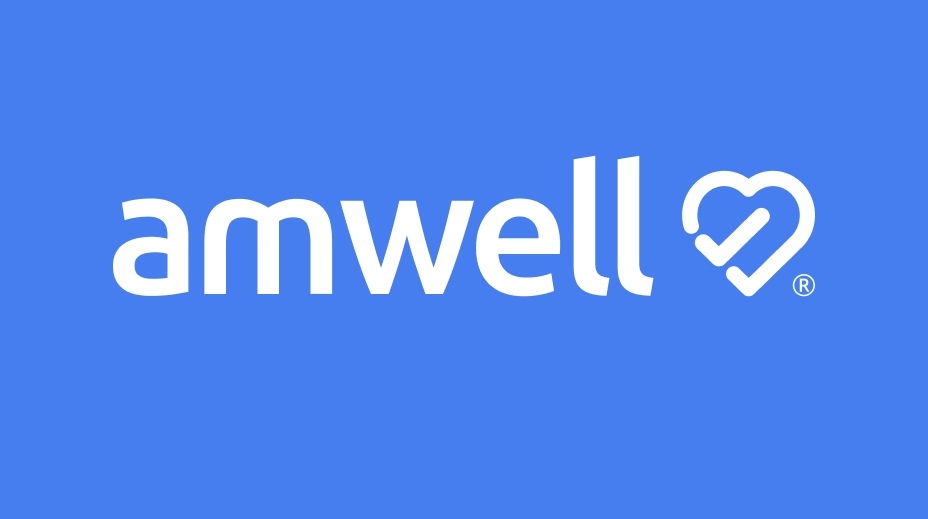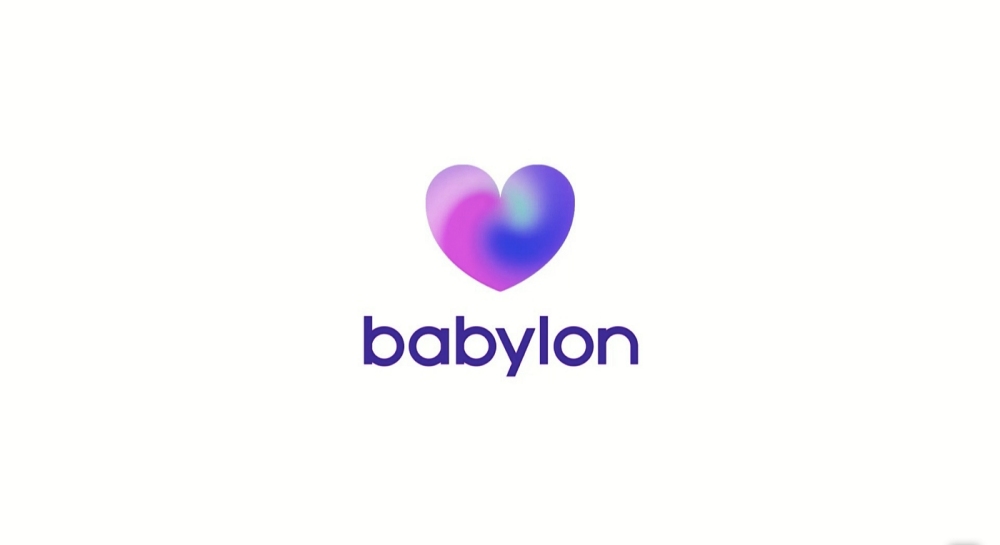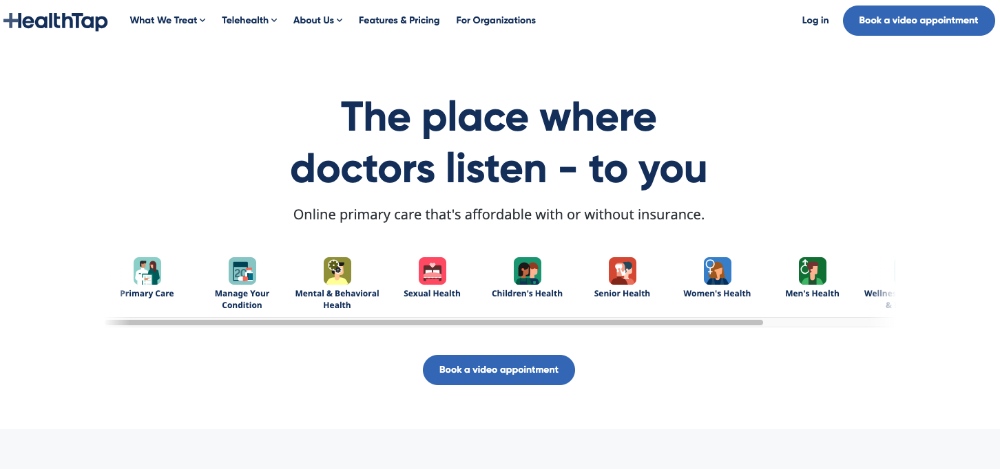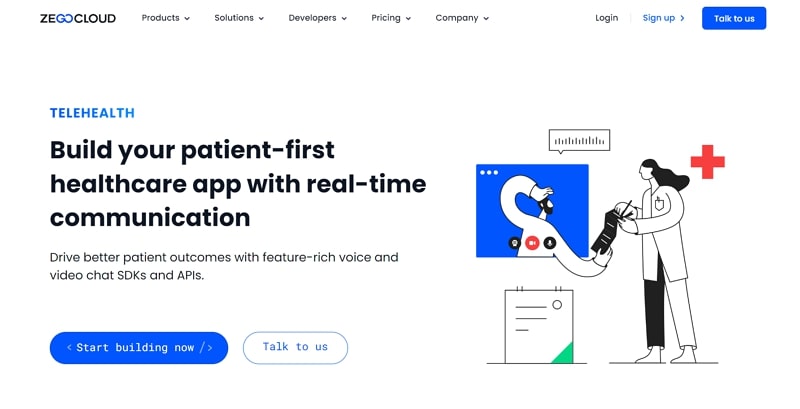The post-covid world has seen the rise of technology in every field of life. Telemedicine app development is a great innovation, especially when talking about the medical field. Moreover, these applications provide much cheaper medical facilities than traditional methods. Go through this article to learn everything you need to know about telemedicine app development solutions.
Telemedicine Trends
Telemedicine is evolving rapidly, with several key trends shaping its future. One major trend is the increased adoption of virtual care, as more patients opt for remote consultations for convenience. AI and machine learning are also being integrated into telemedicine platforms to enhance diagnosis and treatment plans. The use of wearable devices for remote monitoring is growing, allowing healthcare providers to track patient health in real time.
Telemedicine is expanding in mental health care, with platforms like Talkspace and BetterHelp offering accessible virtual therapy. It also helps improve healthcare access for rural and underserved populations, allowing patients to consult specialists remotely. Regulatory changes, like India’s Telemedicine Practice Guidelines, are ensuring telemedicine meets ethical and legal standards, including privacy and data protection.
Chronic disease management is increasingly being done through telemedicine, enabling remote monitoring and regular consultations. Insurance coverage for telemedicine is expanding, making virtual care more financially accessible. Finally, blockchain technology is being explored for secure handling of patient data, ensuring privacy and security. These trends suggest telemedicine will continue to grow and enhance healthcare accessibility.
Telemedicine Apps Market Overview
Today’s generation likes to save time while doing anything in this busy world. The same is true with medical checkups, where you can observe a remarkable spike in telemedicine trends. According to research by Rock Health, around 80 percent of patients have at least utilized telemedicine facilities once.
In addition, Market Data Forecast stated that the telemedicine market will go above 70 billion dollars by the end of 2024. The same report tells us that this market is expected to reach close to 180 billion dollars in 2029. Many tech giants have started telemedicine app development services upon analyzing these trends.
Benefits of Telemedicine Apps
In recent years, telemedicine apps have revolutionized the way healthcare is delivered, providing a convenient and efficient alternative to traditional in-person visits. These digital platforms offer numerous advantages, making medical care more accessible, cost-effective, and timely for patients and healthcare providers alike. Here are some key benefits of using telemedicine apps:
1. Convenience
Telemedicine apps allow patients to consult with healthcare providers from the comfort of their own homes. This eliminates the need for travel and waiting in long queues, saving time and effort.
2. Accessibility
These apps provide access to medical care for individuals in remote or underserved areas where healthcare facilities may be scarce. Patients can connect with specialists and receive quality care without geographical limitations.
3. Cost-Effective
Telemedicine can reduce healthcare costs by minimizing the need for physical infrastructure and lowering the expenses associated with in-person visits. Patients also save on travel and potential lost wages from taking time off work.
4. Timely Care
Telemedicine apps enable quick access to medical consultations, allowing patients to address health concerns promptly. This can be particularly beneficial for minor illnesses or follow-up appointments, helping to prevent more serious health issues.
5. Privacy and Security
Reputable telemedicine apps employ strong security measures, including encryption and compliance with healthcare regulations like HIPAA. This ensures that patient data and communications are kept confidential and secure.
6. Reduced Risk of Infection
By facilitating remote consultations, telemedicine apps reduce the need for physical visits to healthcare facilities. This lowers the risk of exposure to contagious diseases, which is particularly important during pandemics like COVID-19.
Top 5 Telehealth Apps in 2025
1. Doctor On Demand

Doctor On Demand is a popular telehealth app that connects patients with licensed healthcare professionals, including doctors, psychiatrists, and therapists. It offers virtual consultations for a wide range of healthcare needs, from general medical issues to mental health support.
Key Features:
- Video Consultations: Patients can have live video consultations with healthcare providers.
- Prescription Services: Doctors can prescribe medications during consultations, where appropriate.
- Mental Health Support: Offers therapy and psychiatry services for mental health issues.
- 24/7 Access: Available for on-demand consultations at any time.
- Insurance Coverage: Accepted by many health insurance plans, making it more accessible.
2. Amwell

Amwell is another leading telehealth platform that connects patients with doctors, therapists, and specialists via video or text chat. It is designed for both urgent care and long-term healthcare management, offering services to individuals, employers, and healthcare providers.
Key Features:
- Urgent Care & Specialist Consultations: Offers access to a range of healthcare professionals, including specialists for specific conditions.
- Integrated EHR: The app integrates with electronic health records (EHR) systems for seamless patient care.
- Mental Health Services: Provides therapy and psychiatric care for individuals struggling with mental health.
- Prescription Services: Doctors can prescribe medications during consultations.
- Health Monitoring: Integration with health devices for remote monitoring of chronic conditions.
3. Babylon Health

Babylon Health is a comprehensive telehealth app that offers 24/7 access to healthcare professionals, powered by AI-driven health assessments. It is widely used for both primary care and mental health services and is available in many countries.
Key Features:
- AI-Powered Health Assessments: Offers an AI-driven chatbot to assess symptoms and provide health advice.
- Video Consultations: Connects patients with doctors and specialists for real-time consultations.
- Health Monitoring: Tracks vital signs and other health metrics, integrating with wearables.
- Prescription Services: Enables doctors to issue prescriptions electronically.
- Mental Health Support: Provides access to mental health services, including therapy and counseling.
4. Teladoc Health

Teladoc Health is one of the largest telehealth platforms, offering a variety of healthcare services, including virtual visits with doctors, dermatologists, mental health professionals, and more. It is widely used for both urgent care and ongoing medical consultations, serving millions of patients worldwide.
Key Features:
- 24/7 Access to Healthcare Professionals: Teladoc allows patients to connect with doctors at any time for urgent care or general health concerns.
- Mental Health Services: Offers therapy, counseling, and psychiatric consultations for individuals facing mental health challenges.
- Specialist Consultations: Connects patients with specialists across various fields, such as dermatology, pediatrics, and nutrition.
- Prescription Services: Doctors can prescribe medications after virtual consultations when needed.
- Integrated Health Plans: Works with health insurance plans to ensure that telehealth services are covered.
5. HealthTap

HealthTap offers a wide range of telehealth services, including virtual consultations with doctors, personalized health advice, and health-related resources. It provides access to a large network of healthcare professionals and is known for its user-friendly platform and comprehensive health features.
Key Features:
- Live Consultations: Offers live video, phone, or text consultations with doctors and health professionals.
- Health Advice Library: Provides a vast library of personalized health advice and answers to frequently asked health questions.
- Health Record Integration: Patients can store and track their health records and medical history within the app.
- Prescriptions and Refills: Allows doctors to prescribe medications and manage refills through virtual visits.
- Health Groups: Offers community support and patient groups for those dealing with chronic conditions or specific health issues.
Challenges of Telemedicine Apps
Telemedicine apps have significantly improved access to healthcare, but they also encounter several challenges that can impact their effectiveness and adoption. Here are some key challenges faced by telemedicine apps:
1. Data Privacy and Security
Ensuring the privacy and security of patient data is a major concern. Telemedicine apps must comply with stringent regulations like HIPAA in the U.S. and GDPR in Europe to protect sensitive health information. Any data breaches can lead to severe consequences, including loss of patient trust and legal penalties.
2. Regulatory Compliance
Different countries and regions have varying regulations and standards for telemedicine. Navigating these regulatory landscapes can be challenging for telemedicine app providers, especially when expanding into new markets. Compliance with local laws is essential to operate legally and maintain credibility.
3. Technological Barriers
Despite widespread smartphone usage, not all populations have access to reliable internet connections or advanced mobile devices. This digital divide can limit the reach of telemedicine services, particularly in rural and underserved areas. Ensuring broad accessibility remains a significant challenge.
4. Reimbursement Policies
Reimbursement for telemedicine services varies widely between insurance providers and regions. Inconsistent or inadequate reimbursement policies can discourage healthcare providers from offering telemedicine services. Advocacy for more comprehensive and standardized reimbursement policies is needed.
5. Integration with Existing Systems
Integrating telemedicine apps with existing electronic health records (EHR) and other healthcare systems can be complex and costly. Seamless integration is crucial for providing comprehensive care and ensuring that patient data is accurately recorded and accessible across different platforms.
Why Develop a Telemedicine App?
In today’s fast-paced and digitally connected world, telemedicine has emerged as a vital component of modern healthcare. The development of telemedicine apps is transforming the way healthcare services are delivered, offering numerous benefits to patients and healthcare providers alike. Here are some compelling reasons to develop a telemedicine app:
1. Increased Accessibility
Developing a telemedicine app significantly improves access to healthcare, especially for individuals in remote or underserved areas. Patients can connect with healthcare providers without the need for travel, ensuring that medical services are available to a broader population.
2. Convenience and Efficiency
Telemedicine apps provide convenience for both patients and healthcare providers. Patients can schedule appointments, consult with doctors, and receive medical advice from the comfort of their homes. For healthcare providers, telemedicine apps streamline the consultation process, allowing them to manage more patients efficiently.
3. Cost Savings
Telemedicine reduces healthcare costs by minimizing the need for physical infrastructure and cutting down on in-person visit expenses. Patients save on travel costs and time off work, while healthcare providers can optimize their resources and reduce overhead costs.
4. Improved Patient Engagement
Telemedicine apps foster better patient engagement by providing tools for continuous monitoring, follow-up appointments, and easy communication with healthcare providers. This ongoing interaction helps in managing chronic conditions and encourages patients to take an active role in their health.
5. Enhanced Care Coordination
With telemedicine apps, healthcare providers can easily share patient information and collaborate with other specialists. This enhances care coordination, leading to better treatment outcomes and a more integrated approach to patient care.
6. Scalability
Telemedicine apps are scalable solutions that can grow with your practice or healthcare facility. As demand increases, the app can accommodate more users without compromising on the quality of service, making it a sustainable option for expanding healthcare services.
7. Competitive Advantage
Offering telemedicine services sets your practice apart from others, attracting tech-savvy patients who prefer digital solutions. It demonstrates a commitment to modern, patient-centered care, enhancing your reputation in the healthcare market.
6 Must-Have Features of Telemedicine Apps
Researchers looking to step into telehealth app development should include the following features in their application. All the above-mentioned benefits are due to the features we are going to explain below. So, go through these features to develop your first telemedicine app.
1. Real-Time Video Consultations
Secure video conferencing is a must to enable virtual consultations between patients and healthcare providers. Moreover, the primary function of this feature is to provide high-quality video and audio transmission for clear communication.
2. Messaging and Chat Support
In addition to video calling, telemedicine app developers should include an in-app chat feature for patients to communicate with their doctors. It is also helpful for post-consultation follow-ups, sharing updates, or requesting prescription refills.
3. Appointment Scheduling
The telemedicine app development solutions should allow patients to schedule appointments. Also, the integration of this feature with calendars can help manage appointments efficiently.
4. Prescription Management
Developers should also look to integrate features with electronic prescription systems to allow doctors to prescribe medications digitally. As a result, it streamlines the prescription process and improves medication management for patients.
5. Payment Processing Methods
A good telemedicine app development service should add secure payment processing capabilities for consultation fees. Moreover, integration with various payment methods can improve the user experience.
6. HIPAA Compliance
Telemedicine apps must follow strict regulations like HIPAA to safeguard patient privacy and data security. This also includes measures like encryption of sensitive information and secure login protocols.
3 Major Types of Telehealth Applications
After getting to know the basics of these telehealth apps, let’s analyze the 3 major types of these applications. So, telemedicine app development companies can utilize their resources to develop any one of the following apps to provide easy access to patients.
1. Store-and-Forward Apps
These apps allow asynchronous communication, providing a non-direct form of telehealth interaction. Patients can send medical data, such as images, videos, or sensor readings, to the telemedicine app. Afterward, this information is then sent to a healthcare provider for review and evaluation. Within this non-direct communication, patients and doctors do not directly interact with each other.
However, healthcare providers can analyze the information and send feedback at their convenience. Typically, this type of telemedicine app development solution is helpful in the radiology, pathology, and dermatology healthcare sectors.
2. Real-time Interactive Apps
Doctors will be able to provide live video consultations to patients using these applications. With the help of these solutions, users can schedule appointments and express their health concerns to healthcare providers. Patients can also send medical records and other relevant information for a better checkup.
In addition, these patients can get diagnosed through these apps and even obtain prescriptions without needing to visit a physical clinic. All of these features allow virtual checkups and even treatment recommendations in real-time.
3. Remote Monitoring Apps
Telehealth app developers create such apps to help patients track their health data and share it with doctors. It is precious for the management of chronic conditions or post-treatment follow-ups. Moreover, these solutions may integrate with wearable devices or sensors to collect data such as vital signs and blood glucose levels.
Afterward, healthcare providers can then remotely monitor patients’ progress. Therefore, this type of app is helpful for cancer and diabetes patients with long-term illness.
What is the Cost of Developing a Telehealth App?
The cost of developing a telehealth app depends on factors like complexity, features, technology stack, and the development team’s location. A basic telehealth app with essential features like video consultations and appointment scheduling typically costs between $30,000 and $50,000. More advanced apps with features like AI-driven diagnostics, EHR integration, and secure payment systems can range from $50,000 to $150,000 or more.
The technology stack also plays a key role—native development (iOS & Android separately) is more expensive, ranging from $50,000 to $150,000, while cross-platform development (using tools like React Native or Flutter) costs around $30,000 to $100,000. The location of the development team can also affect the price, with rates in North America/Western Europe at $100–$200 per hour, compared to lower rates in Eastern Europe and Asia.
Additionally, ongoing maintenance and updates typically cost 15%-20% of the initial development cost annually. Including design, testing, and compliance requirements, the total cost will vary, but a basic app generally falls between $30,000 and $50,000, while more complex apps can exceed $150,000.
How to Build a Telemedicine App: A Step-by-Step Guide
Building a telemedicine app can revolutionize how healthcare services are delivered, offering convenient, remote access to medical consultations. If you’re planning to develop a telemedicine app, following a structured approach ensures that your app is effective, secure, and compliant with necessary regulations.
1. Define Purpose & Features
Start by defining the core purpose of your telemedicine app. Identify the key features you want to include, such as video consultations, appointment scheduling, prescription management, and secure messaging. Tailor the features to meet the needs of your target audience, ensuring the app addresses their primary healthcare concerns.
2. Ensure Legal Compliance
Telemedicine is regulated by strict laws, which vary by country. Make sure your app complies with relevant regulations like HIPAA (USA), GDPR (EU), and local telemedicine laws. This includes securing patient data, obtaining consent for consultations, and ensuring confidentiality in communications.
3. Choose Technology Stack
When selecting the appropriate technology for your app, consider frameworks like Flutter or React Native for cross-platform front-end development. For the back-end, popular options include Node.js or Django. To support video calls and messaging, integrate real-time communication services such as WebRTC, Agora, or ZEGOCLOUD.

4. Design User Interface (UI)
Design an intuitive, user-friendly interface for both patients and healthcare providers. Ensure easy navigation and a simple appointment booking process. Prioritize clean visuals and responsiveness, ensuring that the app works smoothly on various devices (smartphones, tablets, desktops).
5. Develop the App
Begin building the app by developing both front-end and back-end features. This includes setting up user profiles for patients and doctors, integrating video conferencing tools, creating appointment management systems, and implementing payment gateways for consultations. Ensure the app is secure and can handle patient data with privacy.
6. Test the App
Quality assurance is essential. Test the app’s functionality, security, and user experience to identify and fix bugs. Perform load testing to ensure the app can handle multiple users simultaneously, especially during video consultations. Conduct security testing to protect sensitive patient data.
7. Launch the App
Once the app is developed and tested, deploy it to the relevant app stores: Google Play for Android and Apple App Store for iOS. Ensure that the app complies with their submission guidelines, including privacy policies and data security measures.
8. Provide Ongoing Support
After the launch, continue monitoring the app’s performance and address any issues that arise. Regularly update the app to fix bugs, enhance security, and introduce new features based on user feedback. Keep your app up to date with the latest compliance requirements and technology trends.
9. Market the App
Promote your telemedicine app to attract users. Use strategies like SEO to improve visibility, leverage social media platforms, collaborate with healthcare influencers, and run targeted ads. Consider offering free trials or special discounts to encourage users to download and try the app.
How Can You Monetize Telehealth Applications?
After making all these efforts, you may expect some financial returns from your telehealth application. Go over all these app monetization models to learn how to make money from your apps:
- Subscription Model: Telemedicine app developers can charge users a monthly or annual fee for access to the platform and its core features. For this purpose, you can devise basic and premium plans to cater to the needs of patients from different backgrounds.
- Freemium Model: Developers wanting to boost their user base can offer a basic level of service for free. In addition, they can add an option to upgrade to premium features for a set price. By doing so, they will be able to attract a broader user base while in-app purchases generate revenue.
- Additional In-App Purchases: You can also allow users to pay for specific services within the app. These telemedicine app development solutions may include such as medication refills and lab test ordering.
- Partnerships and Referrals: While working with healthcare systems, you will also get the chance to partner with doctors. You can charge them a referral fee for directing users to their services. Moreover, developers should look to collaborate with pharmacies to offer integrations for prescription refills.
How Can ZEGOCLOUD Help for Telehealth App Development
ZEGOCLOUD can play a pivotal role in developing a telehealth app by providing essential communication features that are critical for remote healthcare services. With the rise of telemedicine, it’s crucial to ensure that healthcare providers and patients can communicate seamlessly and securely. ZEGOCLOUD offers robust solutions that make it easier to build telehealth apps with features such as real-time video consultations, secure messaging, and scalability, all of which are vital for ensuring a smooth user experience in healthcare environments.

Here are compelling reasons to choose ZEGOCLOUD SDK for your telemedicine app development:
- Audio & Video Communication: ZEGOCLOUD provides high-quality, low-latency video and audio communication services. Healthcare providers can conduct secure, HIPAA-compliant video consultations or use audio-only calls when video isn’t necessary, ensuring seamless and reliable communication for telehealth appointments.
- Real-Time Messaging: Secure and encrypted real-time messaging is critical in telehealth for consultations, follow-ups, and sharing updates. ZEGOCLOUD enables text-based communication, making it easy for patients and doctors to exchange information, prescriptions, and recommendations securely.
- Cross-Platform Compatibility: ZEGOCLOUD provides SDKs and APIs that support both mobile (iOS, Android) and web platforms, making it easy to integrate video, voice, and messaging services into your telehealth app, regardless of the platform your users are on.
- Data Security and HIPAA Compliance: ZEGOCLOUD ensures that all communication within the app is encrypted and complies with data security standards such as HIPAA. This is essential for maintaining patient privacy and meeting legal requirements in the healthcare industry.
- Ease of Integration: ZEGOCLOUD’s APIs and SDKs simplify the integration of real-time communication features into your telehealth app. With comprehensive documentation and support, developers can quickly implement communication features without starting from scratch.
Conclusion
After going through this detailed guide, you now know everything there is to learn about telemedicine app development. Developers looking to create their own app for the healthcare sector can take guidance from this article to streamline their process. In addition, we recommend they use ZEGOCLOUD to get access to chat and video calling APIs for their telehealth apps. With its secure and feature-rich SDKs, telemedicine app developers can speed up their development cycle.
Read more:
Telemedicine App Development FAQ
Q1: What software is used for telemedicine?
Telemedicine software typically includes video conferencing tools, patient management systems, electronic health record (EHR) integrations, and secure messaging platforms. Popular telemedicine software includes Zoom for Healthcare, Doxy.me, Teladoc, and Amwell. These platforms enable secure, HIPAA-compliant video consultations, patient scheduling, and medical record access, facilitating remote healthcare delivery.
Q2: Does telehealth include apps?
Yes, telehealth includes mobile apps. These apps allow patients to receive healthcare services remotely, such as virtual consultations, appointment scheduling, and health monitoring. Examples of telehealth apps include Doctor On Demand, MyChart, and Babylon Health, offering users access to healthcare from the convenience of their smartphones.
Q3: Is telemedicine legal in India?
Yes, telemedicine is legal in India. In 2020, the Medical Council of India (MCI) issued Telemedicine Practice Guidelines, which allow doctors to provide remote consultations. These guidelines ensure that telemedicine services meet ethical, legal, and professional standards while ensuring patient privacy and data security.
Q4: What is the most used telehealth platform?
Some of the most widely used telehealth platforms include Teladoc, Amwell, and Doctor On Demand. These platforms have gained popularity for their user-friendly features, secure video consultations, and wide range of healthcare services, including mental health support and general medical consultations. Zoom for Healthcare also became highly popular, especially during the COVID-19 pandemic, due to its integration with healthcare systems.
Let’s Build APP Together
Start building with real-time video, voice & chat SDK for apps today!










